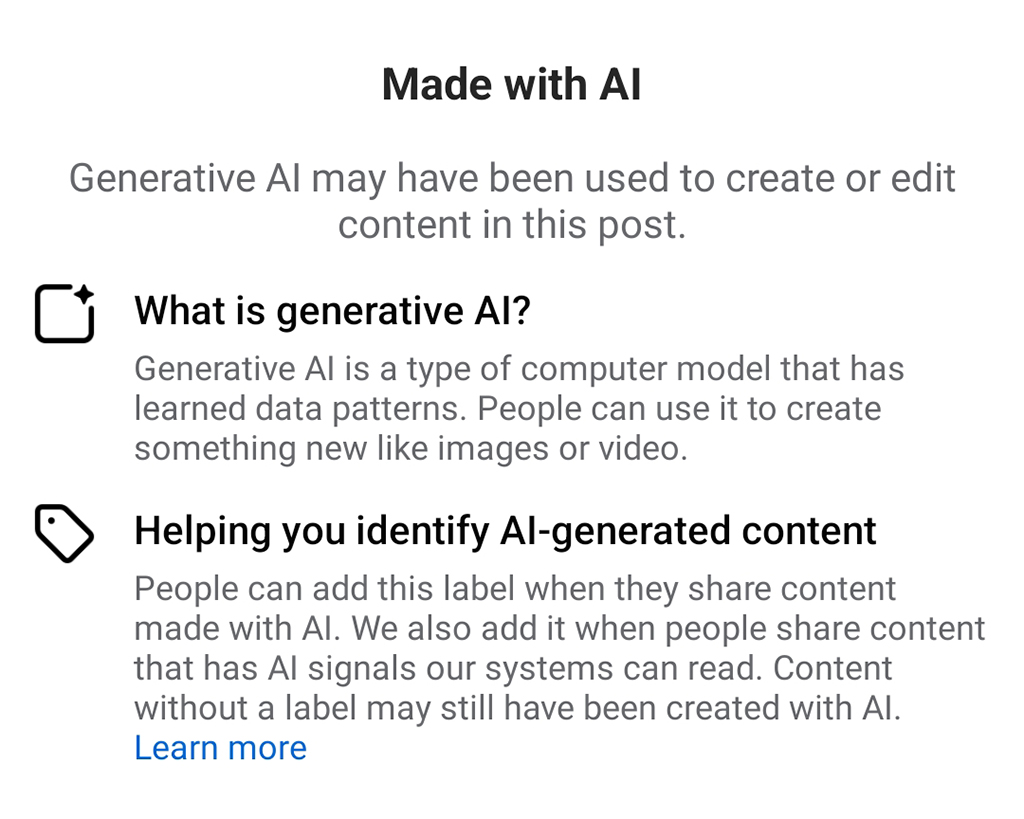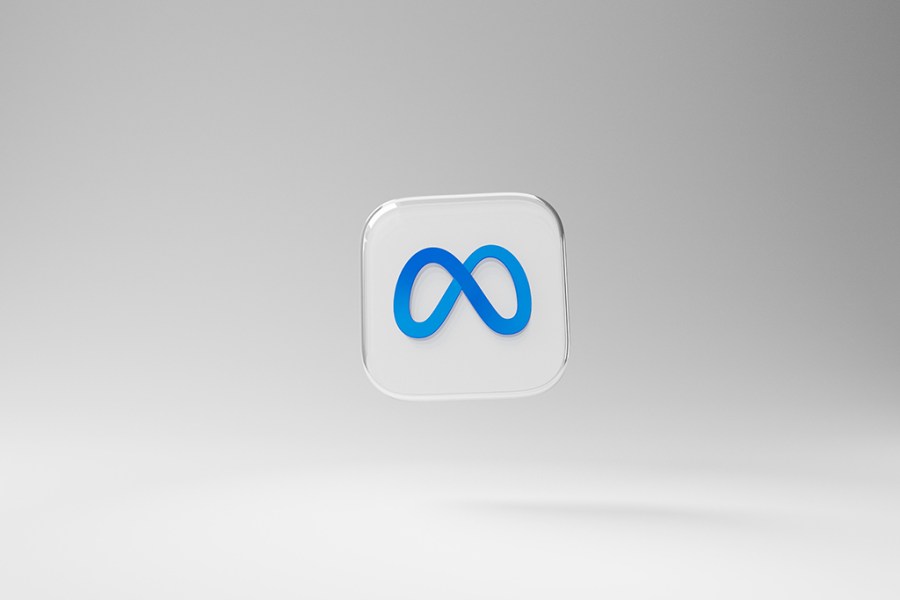Meta announced in April 2024 that they would start rolling out Made with AI labels from May, and as promised that’s what they’ve done. First it started with the option to add a label yourself when uploading an image to Instagram, but now across Facebook, Instagram, and Threads images are automatically being labelled even if a tiny amount of editing has been made to it. But it’s not just image-based posts, your stories and reels will be affected too.
Some say that social media has been in decline for some time now and this may well be the final nail in the coffin for Meta. It is clear that this update will cause some problems with photographers and creators especially.
Social media upset
Within a few days of the roll out I already saw some upset, when a photographer has shared an image they have created themselves in-camera, but added some post-production spice to enhance their photos. If images include ANY involvement of an AI powered tool in Photoshop or other third-party software (whether it’s generative fill, noise reduction, or simply a touch up to remove specks of dust), then the Made with AI label is going to pick it up.
I have mainly seen it so far where photographers have used generative AI e.g. generative fill and expand, but no doubt Meta will crack down further on other AI tools. The label at the stage of writing is, doesn’t explicitly say to what extent these tools or AI creation have been used in the image. So, an image edited with a small amount of touch-ups and another that is fully made from an AI image generator are essentially being labelled the same. Ultimately social media users need to use their own judgement as to how heavily AI is used, if at all, which doesn’t really sit right with me.

On the other hand, nor does the fact that AI imagery is making its way around the internet and social media platforms, without us knowing or being able to detect it’s AI (unless you spot the tale-tale signs of course (look at the hands!!)). There’s been much conversation and debate about AI, particularly in the photography world – the outcome clearly being more negative. But branding what might be a ‘real’ photo as essentially fake just means you can’t trust what you see on the internet, even more so than usual.
All is not what it seems
It’s important to note that some content without the label, may still be AI. Some users have likely already found ways around it and others possibly have fallen through the programming net.
If you see the ‘Made with AI’ tag on post, you can tap on it and at least have the option to see some more information about the image tag and a link to be directed to Meta’s explanation. You can read this here: https://www.meta.com/en-gb/help/artificial-intelligence/how-ai-generated-content-is-identified-and-labeled-on-meta/
But where is the line and where is the balance? Edited with AI and Made with AI, whilst still AI are two separate things. If Meta insists on using these labels and adding them themselves, there should be a few different options to show the extent of AI or editing used, as well as an option to hide them.
I think a move like this is necessary in the age of AI, but one that really needs more refining and wider explanation before it’s shared with the masses.
Made with AI FAQs:
What is Made with AI?
“Content that is detected to have industry-standard signals indicating that it’s generated by AI will be labelled as “Made with AI”. This includes content that is created or edited using third-party AI tools. It also includes content that is created using Meta’s AI tools, downloaded and then uploaded to Instagram.”
It’s not just image posts, reels and stories will also have the same tagging system.
How is the label added?
Meta defining what constitutes as AI is based on what’s being picked up in the metadata of an image.
Meta says, “Any content that contains industry-standard signals that it’s generated by AI will be labelled as “Made with AI”. This includes content that is created or edited using third-party AI tools. It also includes content that is created using Meta’s AI tools, downloaded and then uploaded to Facebook, Instagram and Threads.”
“…Meta does not require you to label images that have been created or altered with AI. However, these images will still receive a label if our systems detect that they were AI generated or if they were altered using AI.”
In a recent conversation creators @colinandsamir questioned Head of Instagram Adam Mosseri (@mosseri) about the subject to clear things up. He said: “It’s just the metadata on the image. People are doing benign things in Photoshop that are technically using AI. And then we’re just respecting the file’s mark saying ‘Hey, AI was used to make this.’ We have to figure this out because clearly this is frustrating and not the ideal experience.” See the conversation here for more.
What does it mean for photographers?
If you use this kind of editing software, chances are the moment you publish to Instagram, Facebook or Threads and do not label as AI yourself, Meta may well do it for you.
Within their explanation Meta says “There may be penalties if you do not label content as required.” They haven’t stated what penalties and it’s hard to know whether the label will have any implications on your profile, reach or engagement, or how the platforms will share your work at this stage.
Can you remove the label?
If the label has been added automatically by Instagram, Facebook etc, it looks like you can’t remove it yourself, without removing the whole post.
In standard posting you can add the label yourself before posting and after posting you can edit the label or “Label as AI”.
I’ve seen many comments suggesting removing all metadata on the image before exporting and sharing to Instagram, Facebook or Threads is a tactic for preventing Meta picking it up. But I do think there still needs to be some honesty in what we are creating and sharing, particularly if you are making images to the point they are unrecognisable.
The views expressed in this column are not necessarily those of Amateur Photographer magazine or Kelsey Media Limited. If you have an opinion you’d like to share on this topic, or any other photography-related subject, email: ap.ed@kelsey.co.uk
Related content:
- For most of us, it’s not about the camera
- Adobe removes AI imagery after Ansel Adams row
- He won an AI contest with a non-AI photo, then got a BIG surprise
Follow AP on Facebook, Twitter, Instagram, YouTube and TikTok








